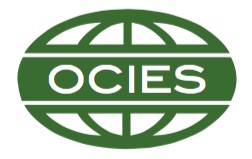Australia and education in the Pacific: What is relevant and who decides?
Abstract
Education plays an essential role in defining national culture. Therefore, aid donors' involvement in recipients’ national education systems is always likely to be controversial. In the case of the Pacific Island Countries, this sensitivity is increased by the fact that there are significant divisions of opinion within the countries, notably between those who emphasise the role of education in preparation for participation in the global economy and those who are fighting to preserve their local cultures from extinction. Whilst optimists argue that it is possible to do both by creating global citizens who are deeply grounded in their own cultures, realists suggest that with very small groups this is simply not possible. Both sides accept the statistical evidence that the small group cultures of Melanesia have failed in delivering even basic literacy to all as compared with the nationwide cultures of Polynesia. Meanwhile, Australia pursues an explicit neoliberal agenda of providing education to the islanders to make them employable across the globe. This paper explores some of the issues in this debate, including differences of approach between AusAID and NZAID.Downloads
Published
Issue
Section
License
The International Education Journal: Comparative Perspectives is the official journal of the Oceania Comparative and International Education Society. The IEJ, (ISSN 1443-1475), publishes a general volume bi-annually in July and December and also publishes Special Editions occasionally. It is a free, open-access scholarly journal, managed by volunteers. There are no article processing charges, or any charges to authors.
In relation to intellectual property, as of 2020, the IEJ: CP claims only first publication rights; copyright of all work published in the journal remains with the authors under Creative Commons copyright license CC-BY-ND (4.0). Author(s) retain all rights to their works, ensuring that reference to the International Education Journal: Comparative Perspectives is clearly stated on any copies made or distribution. Submissions must not involve third parties with a claim to copyright, and be the sole work of the author(s). It is the responsibility of the author(s) to secure permission to reproduce photographs, illustrations, figures or tables. Single images, tables or figures can be re-used . If more than a single image or table are to be re-used authors must attribute first publication to IEJ: CP notify the IEJ: CP Editor. Authors may also make derivative works which are subject to these limitations.
See https://creativecommons.org/licenses/by-nd/4.0/ for more detail.
Re-distributed or used material must be referenced to the International Education Journal: Comparative Perspectives.
